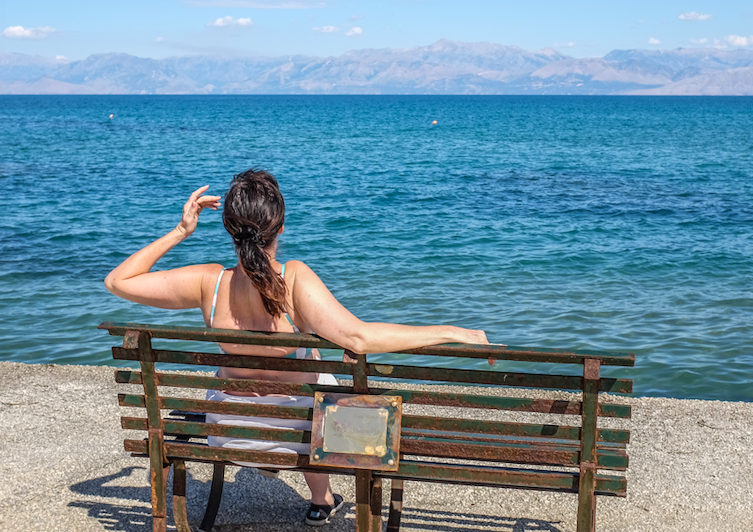 BENCH WITH A VIEW Looking out across the Ionian Sea
BENCH WITH A VIEW Looking out across the Ionian SeaTHE NEIGHBOURS were kicking up an awful racket. I was enjoying a cocktail on the patio of the Rodostamo Hotel overlooking Corfu Bay. In the background the cacophony continued: crickets, cicadas, bees buzzing heavily in the bird-of-paradise bushes.
That almost electric hum is a beautiful accompaniment to the warmth of an Ionian night, and to my view across a lush, green valley that stretched down to the sea and westwards towards Albania.
Guests to Corfu over the millennia have included Cicero, Julius Caesar, Mark Antony, Nero and the Emperor Titus. Also the Venetians — probably longer than the rest of the usual suspects put together.
Visitors have not always been welcome, and given a n expansive Corfoit welcome. Well with a few unfortunate exceptions. Saint Jason and Saint Sosipatros arrived in the 1st century AD, probably from somewhere in Greece. Their mission was to convert the place to Christianity; the Corfiots were having none of it, and — their traditional welcoming nature deserting them — promptly threw the two missionaries into a vat of boiling water. Today the Byzantine church of St Jason and St Sosipatros, made of stone and marble, is reputedly the oldest on the island. Approximately 1,000 years of holy water has been poured into the stoups and fonts of the church. It is one of the few places where you can use the word ‘iconic’ without sounding clichéd — the place is, after all, coming down with beautiful icons and swirling mosaics.
There are guides and priests and locals — all who appear eager to tell you the whole story.
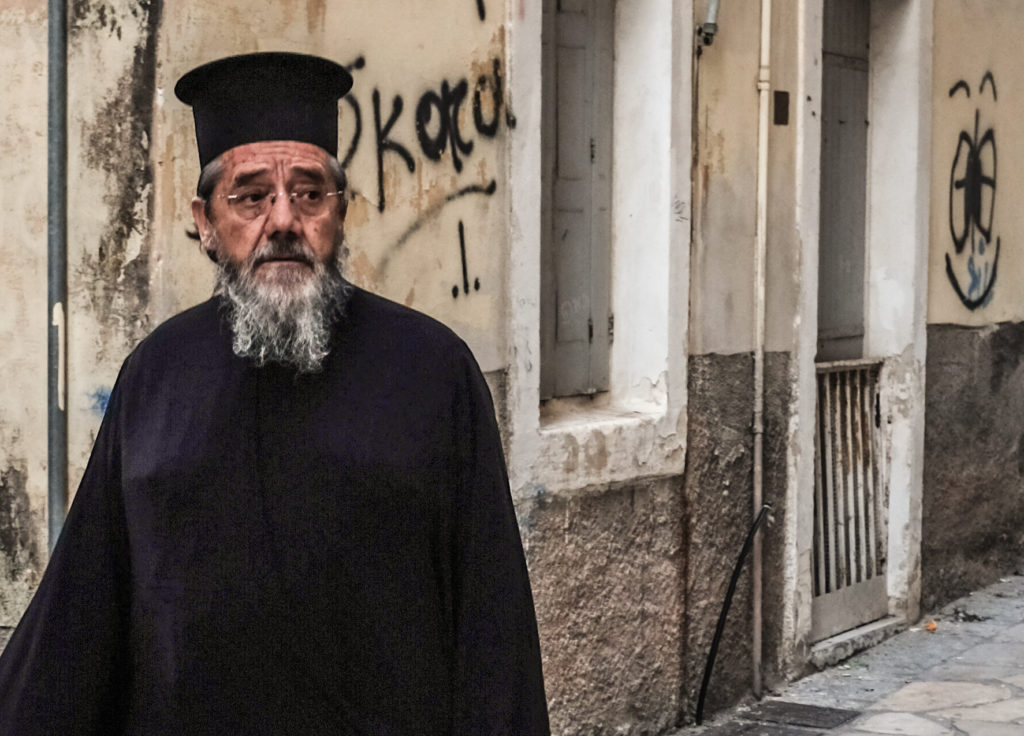 CORFU CLERGY More than happy to give you chapter and verse about the history of their church
CORFU CLERGY More than happy to give you chapter and verse about the history of their churchNeighbourly murder continued over the centuries. The elegant city of Corfu is at a strategic point on the coastline. Romans, Goths, Byzantines, Normans, the British have all fetched up here. The Venetians eventually got their marching orders at the end of the 18th century, but it’s their influence that remains — a tangle of narrow alleyways, shuttered façades, wide squares, two castles (which don’t look as if they were built for fun), sufficient churches to satisfy the most ardent sinner, ditto tavernas. This is Venice without the canals. Much of the look of Corfu city is indeed down to the Venetians — the churches, the art, the neoclassical housing stock. The Republic of Venice held sway here for around 500 years from the 13th century onwards.
The Spianda, the centre of social life in Corfu, is surrounded by some of the town’s most notable landmarks: the Venetian-Roman style city hall, the Palace of Sts. Michael and George. For an afternoon of voluptuous languor, sit at one of the cafes on the Liston, an arched 18th century colonnade. You might even catch a game of cricket — kids still play it on the streets, an echo of one-time British rule on the island.
Corfu is known at “the Green Island”, the Ionian Sea’s very own Emerald Isle. This is due to what my guide book calls “abundant rainfall”. In fact the average annual rainfall is over 1,000mm per year, or more than 40 inches, which actually makes it wetter than most places on the east coast of Ireland.
But it’s a lot warmer. So are the waters lapping the coves and bays.
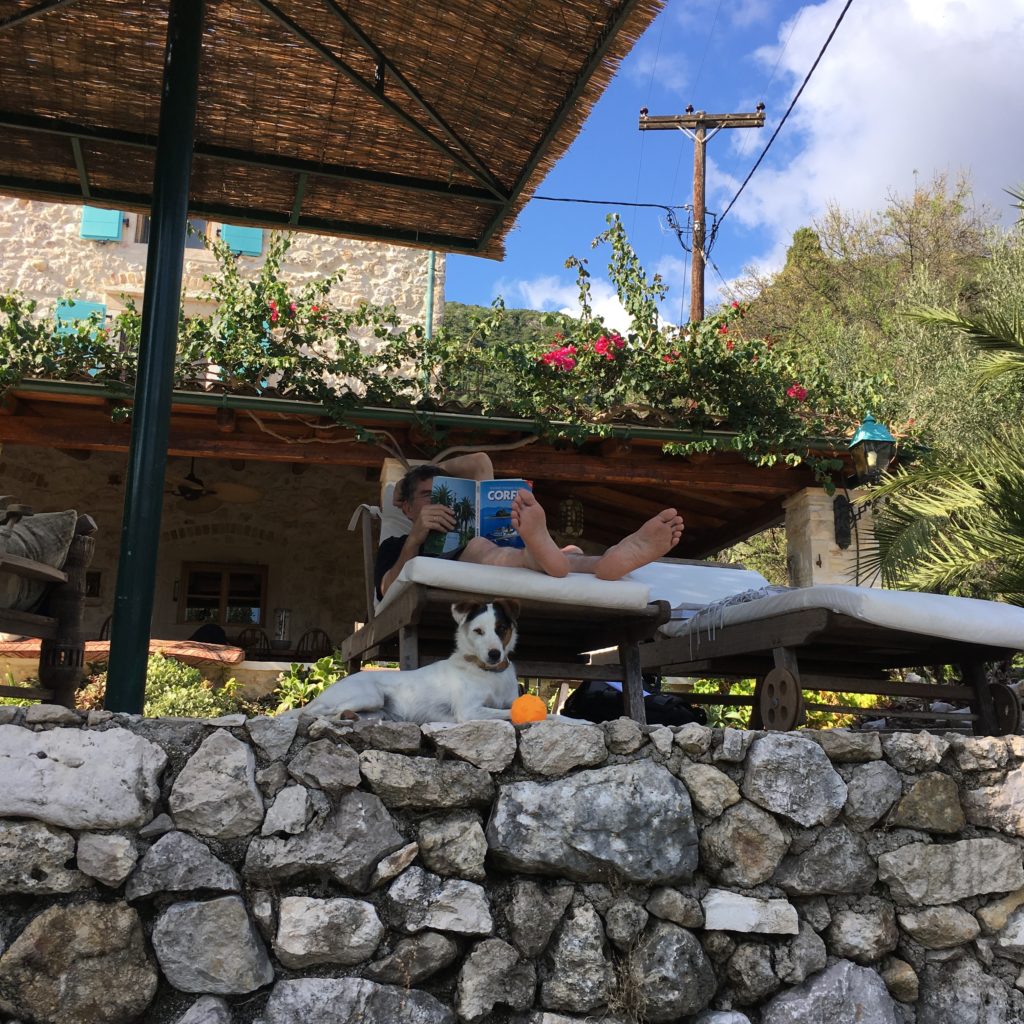 KEEN RESEARCHER Mal on a relentless quest for more local knowledge. Local dog George keeps him company
KEEN RESEARCHER Mal on a relentless quest for more local knowledge. Local dog George keeps him companyI am almost contractually obliged to talk about the turquoise waters of the Ionian Sea, but in reality from the Rodostamo Hotel, on the northeast coast — and home for me during my stay on the island — the sea appeared divided into three colours. The waters that washed round the Bay of Kommeno, just a few hundred metres or so from the hotel, were a cornflower blue; out in the straits it turned to azure, and stretching away towards Albania the ocean was a deep navy blue. I gazed down from my patio, mesmerized at the colourscape before me, wishing I’d brought my easel and paints— before remembering I can’t paint, and don’t have even have a decent pencil, never mind oils and accoutrements. But the place does that sort of thing to you — makes you think you might be an artist. Although it might have been the retsina.
I had arrived in Corfu before Cerberus hit the Mediterranean and roasted the inhabitants of Spain, Italy and Greece with temperatures up to 50C. Cerberus, according to Greek mythology, is the Hound of Hades who guards the gates of the Underworld to prevent the dead from leaving
On my visit, just prior to the arrival of the Hound, I encountered another phenomenon from the Greek sagas.
The arrival of Homer’s Ulysses in Corfu was delayed by the fury of Poseidon, who was instrumental in naming Corfu, stirring up a great tempest in the process. It seemed Poseidon was tetchy enough about my arrival too; a Hitchcock-grade storm raged throughout the first night.
But the rainfall, and the usually balmy climate, guarantee a baroque extravagance of vegetation. The verdant 28-acre estate of the Rodostamo showed much evidence of that — jacaranda, walnut, avocado, oranges, banana, almonds, bananas, and olives, all grow in profusion. Take a handful of Corn Flakes with you and you could make your own muesli.
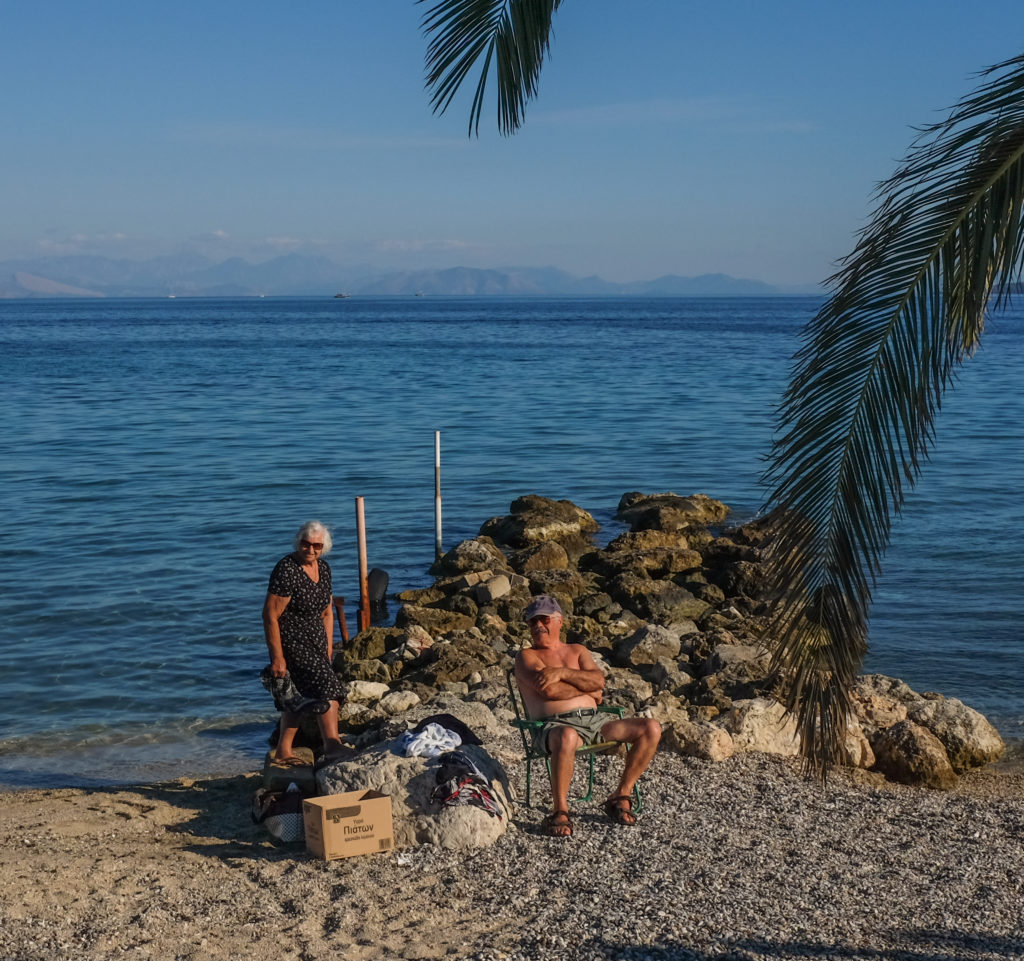 ISLAND IN THE SUN An easy pace of life for the locals
ISLAND IN THE SUN An easy pace of life for the localsThe rooms and suites of the Rodostamo are situated in the main building, overlooking the olive tree gardens and the bay. You can even choose a suite with a heated, private pool.
Bungalows and villas are situated up the hillside — you get there via the resort’s cable car, if you please. All bungalow accommodation includes a private terrace with views of Kommeno Bay and Gouvia Marina. On my first night as the moon rose over the Ionian Sea and I was enjoying a gin and tonic on the patio, I heard the unmistakable fluting melody of a nightingale singing in the orchard (even though I hadn’t insisted on it).
One of the few things that might prize you away from the hotel, its 50 metre swimming pool and its spa, is a motor boat excursion up the coast. These are widely available at most towns and will take you to private coves where you can drop anchor and stare into the clear waters. Head up the island and you’ll come to the resort town of Kalami, where the Durrells wrote their books, saved animals and helped change the way we think about nature conservation.
A stop at a little harbour is obligatory — there’s almost always a taverna nearby. They all have their own wooden jetties, and somebody from the restaurant will usually come down and help you moor before asking you whether you want more wine.
Seafaring duties done, I headed slightly inland to the town of Ágios Markos and thence to Paleokastritsa, with its hilltop monastery, just nine miles (15km) west of Rodostamo. The olive groves rise steeply up the mountains, and paths thread through woods — good walking, if you want it. The local routes join the Corfu Trail at the village of Spartilas a mile away. The 8-day trail passes through mountain villages where you’re assured of a traditional, warm Ionian welcome. I walked past one low stone cottage. I stopped to admire the bougainvillea and oleander. A few hollyhocks too.
An older woman appeared at the door, not to tell me to clear off, but to come and sit down in the garden and have a drink of lemonade — lemonade made from their own lemons. Soon her husband appeared and we all sat in the afternoon sunshine relaxing and chatting, even though my Greek was on a par with their English (that is, not that good, to be honest. Neither the language of Homer nor Shaw). But on it was probably the best lemonade I've ever had, and the finest couple of hours I’ve spent on holiday. The retsina appeared not long after the lemonade.
Hereabouts life goes on pretty much as it always did. My new friends possibly didn’t even know that the Venetians had left; if they did, they didn’t care. And after a couple of hours neither did I.
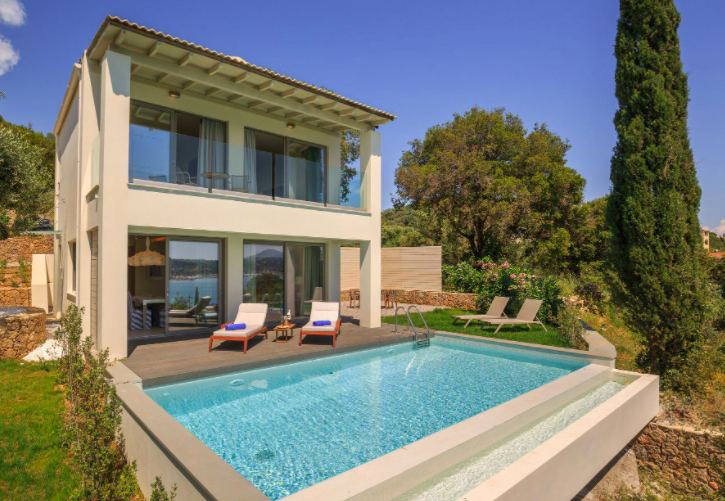 Accommodation at the Rodostamo
Accommodation at the RodostamoRodostamo Hotel & Spa, Corfu B&B
Book Flights + Hotel from £616.30pp through British Airways Holidays in September 2023 for 7 nights in a Superior Room. Full breakfast. Departing from London Gatwick
Aside from Corfu, British Airways Holidays has over 50 five-star package options for Crete if you're looking for the perfect package. It's worth a dive.
Mal Rogers was a guest of British Airways Holiday

